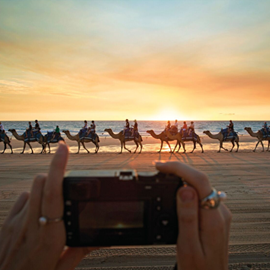Noise Management
In this section
In this section
OUR FLY NEIGHBOURLY PROGRAM
One of the great advantages of the Broome International Airport site is its convenient location close to the town’s commerce and tourism districts.
Passenger surveys have shown that most people like it that way. So BIA has taken steps to minimise any potential conflict between airport operation and local leisure, housing and business activities.
Passenger flight paths are restricted to air space over lightly populated areas keeping aeroplanes and helicopters away from homes and businesses.
The airport procedures provide pilots with landing and take-off routes which direct most flights over the ocean or local waterways.
The procedures are part of the “Fly Neighbourly” policy at Broome International Airport.
The company has set up an information and feed-back line for people wanting to know more about the Fly Neighbourly policy. The number is 08 9192 6357
Fly Neighbourly Procedures
Information for aircraft operators
The following procedures apply when operating piston engine and turboprop aeroplanes and helicopters within the Broome environs.
The requirements can be subject to overriding Air Traffic Control (ATC) instructions, in IMC, VMC and stress of weather, or for traffic avoidance. Also refer to NOTAM’s and ERSA entries for the latest information.
Aircraft operators please contact the friendly team at Broome ATC for advice, particularly if you are visiting Broome for the first time.
ARRIVALS
Piston Engine and Turboprop Aircraft
Twin Engine Helicopters
DEPARTURES
Piston Engine and Turboprop Aircraft
Twin Engine Helicopters
CIRCUIT TRAINING
Piston Engine and Turboprop aircraft
Twin Engine Helicopters









